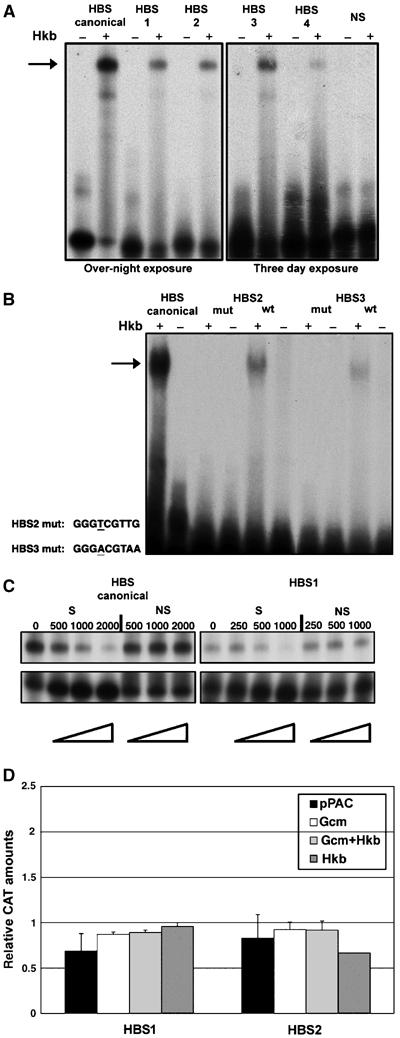Figure 5.

Hkb binds to its target sequences but does not act as a transcription factor. (A) Gel-shift assay showing DNA binding of a purified GST-–Hkb fusion protein (Hkb). Labeled 27-mers corresponding to each of the four HBSs, to the canonical HBS (Kuhnlein et al, 1997) or to nonspecific DNA (NS: GCATGGACCAACATTGACACCGCTTTG) were used in the assay. Binding is indicated by arrows. (B) Hkb binding is abolished when HBS2 or HBS3 carrying point mutations are used (HBS2mut and HBS3mut, respectively, mutant nucleotides underlined). Binding to the canonical site is shown as a positive control. Arrow indicates the position of bound 27mers. (C) Competition gel-shift assay on canonical HBS and HBS1. S and NS indicate specific and nonspecific cold competitors, respectively (X indicates folds of excess, 0 indicates the absence of competitor). (D) pBLCAT5 reporter constructs containing either HBS1 or HBS2 (HBS1 and HBS2) were cotransfected with one (pPAC, pPAC-Gcm or pPAC-Hkb) or two (pPAC-Gcm and pPAC-Hkb) expression vectors. CAT assay data were normalized by using control reporter vector pBLCAT5. Each bar represents the average of at least three measurements, and error bars indicate standard error.
